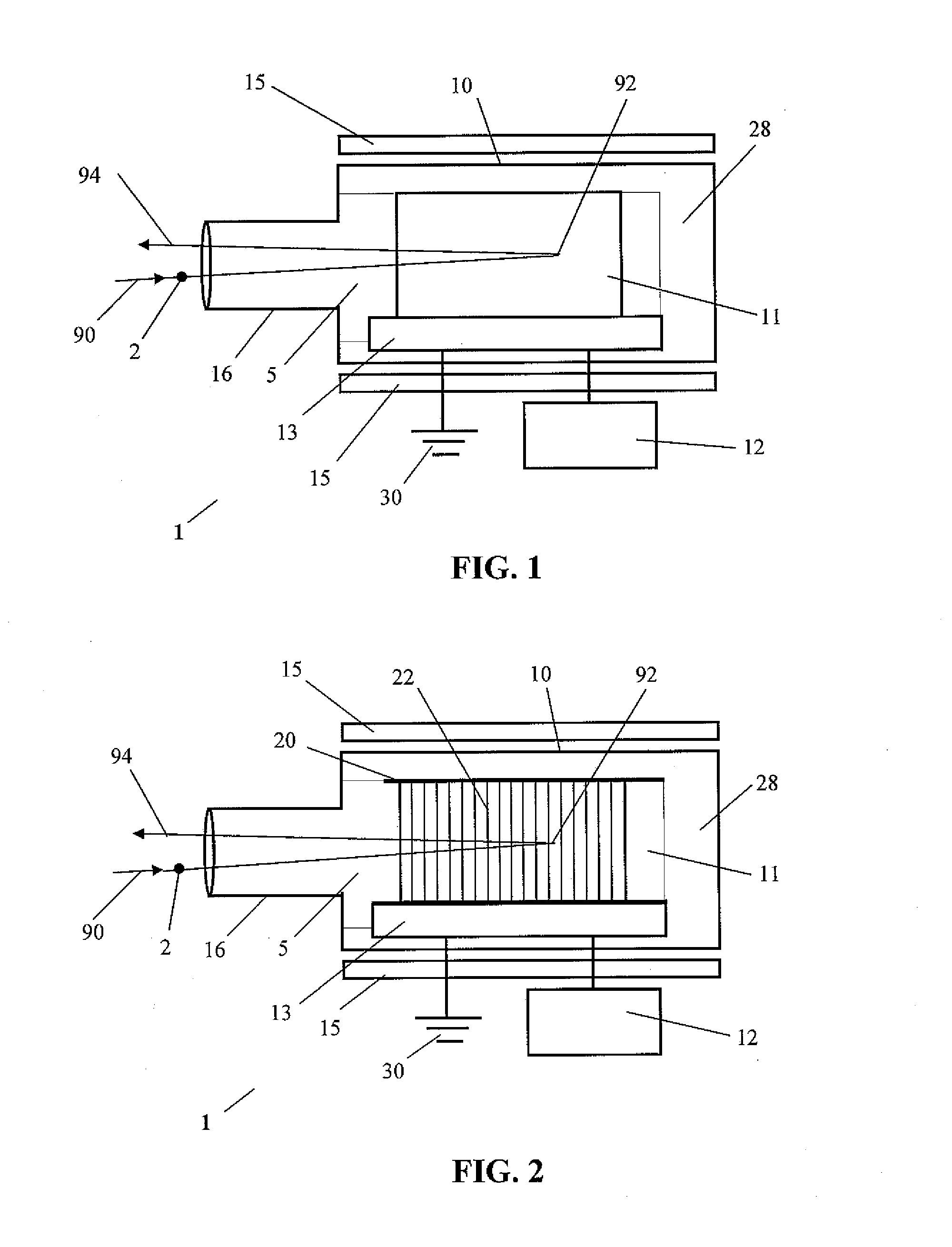Particle beam cooling device
a cooling device and particle beam technology, applied in the direction of accelerators, electric discharge tubes, electrical apparatus, etc., can solve the problems of limiting the ability to change, difficult to manipulate, and many seconds to achieve significant reduction, so as to reduce the emittance of charged particle beams, increase the acceptance of particles, and high intensity
- Summary
- Abstract
- Description
- Claims
- Application Information
AI Technical Summary
Benefits of technology
Problems solved by technology
Method used
Image
Examples
Embodiment Construction
[0033]This device works by matching an incoming beam to a frictional cooling channel, and increasing the acceptance of that channel by perhaps a thousandfold, making it practical to produce beams of high intensity and brightness. A problem is that the acceptance of the frictional cooling channel is generally quite small, with an energy width of just a few kilo-electron-volts. An aspect of this device is to redirect the input beam particles inside the device to an outgoing or output beam (i.e., a particle turn-around), and then to direct the turned-around particles into the acceptance of an outgoing or output frictional cooling channel. By injecting the beam substantially backwards into the device (i.e., with respect to the ultimate, outgoing or output beamline), and having turned it around to exit the device through a frictional cooling channel, the effective energy acceptance of the device is approximately that of the high voltage used, which is on the order of several Mega-Volts i...
PUM
 Login to View More
Login to View More Abstract
Description
Claims
Application Information
 Login to View More
Login to View More - R&D
- Intellectual Property
- Life Sciences
- Materials
- Tech Scout
- Unparalleled Data Quality
- Higher Quality Content
- 60% Fewer Hallucinations
Browse by: Latest US Patents, China's latest patents, Technical Efficacy Thesaurus, Application Domain, Technology Topic, Popular Technical Reports.
© 2025 PatSnap. All rights reserved.Legal|Privacy policy|Modern Slavery Act Transparency Statement|Sitemap|About US| Contact US: help@patsnap.com



